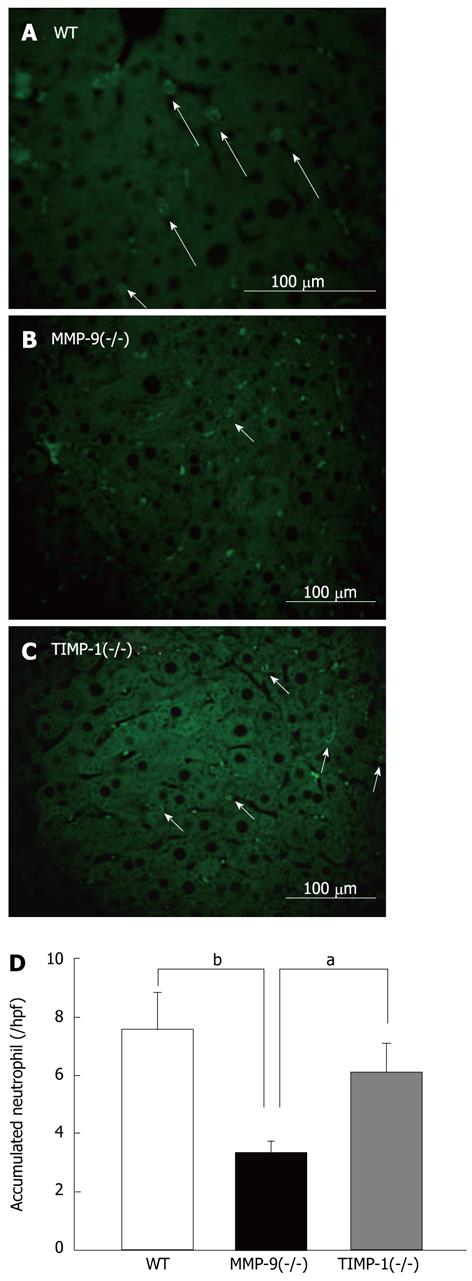Copyright
©2012 Baishideng Publishing Group Co.
World J Gastroenterol. May 21, 2012; 18(19): 2320-2333
Published online May 21, 2012. doi: 10.3748/wjg.v18.i19.2320
Published online May 21, 2012. doi: 10.3748/wjg.v18.i19.2320
Figure 7 Immunohistochemical analysis of accumulated neutrophils with myeloperoxidase staining in remnant livers of wild-type, matrix metalloproteinase-9(-/-), and tissue inhibitors of metalloproteinases-1(-/-) mice at 6 h after 80%-partial hepatectomy.
Representative images of myeloperoxidase staining, labeled in green (Alexa Fluor 488), of cytoplasmic azurophilic granules in neutrophils (arrows) in wild-type (WT) mice in remnant liver sections in (A) WT, (B) matrix metalloproteinase (MMP)-9(-/-), and (C) tissue inhibitors of metalloproteinases (TIMP)-1(-/-) mice. A histogram shows the number of accumulated neutrophils in the remnant liver (D). Significantly fewer neutrophils were observed in the remnant liver in MMP-9(-/-) mice than in WT and TIMP-1(-/-) mice (aP < 0.05, bP < 0.01).
- Citation: Ohashi N, Hori T, Chen F, Jermanus S, Eckman CB, Nakao A, Uemoto S, Nguyen JH. Matrix metalloproteinase-9 contributes to parenchymal hemorrhage and necrosis in the remnant liver after extended hepatectomy in mice. World J Gastroenterol 2012; 18(19): 2320-2333
- URL: https://www.wjgnet.com/1007-9327/full/v18/i19/2320.htm
- DOI: https://dx.doi.org/10.3748/wjg.v18.i19.2320









